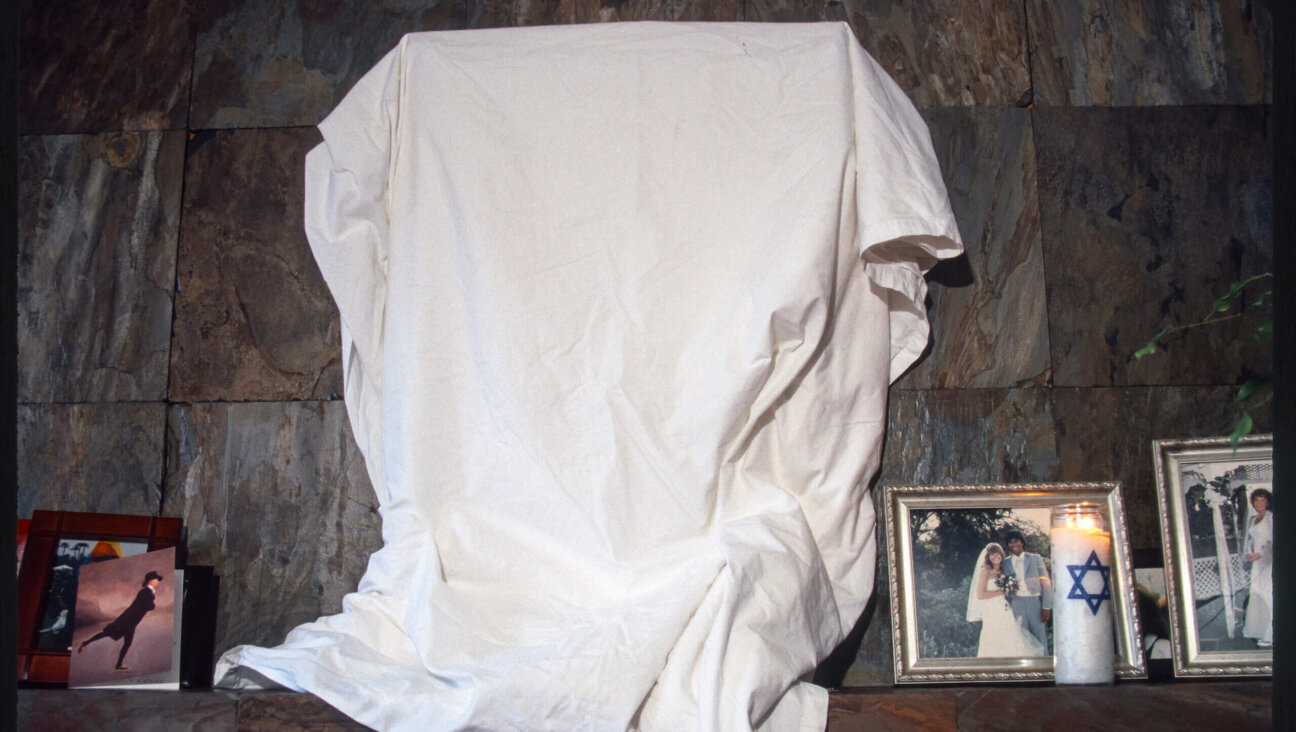An ode to Ellis Island, whose dingy reality contradicted its majestic dreams

Still Yearning To Breathe Free: Immigrants arriving at Ellis Island are the ostensible subject of Georges Perec’s prose-poem. Courtesy of Getty Images
Reading Georges Perec’s prose poem“Ellis Island” (reissued this month in a slim, Statue-of-Liberty green edition courtesy of New Directions), I felt inspired to coin a word. A wee bit precious of me, I’ll admit — but then, as I may have mentioned already, I was reading a book by Georges Perec. This is the writer who spent the better part of his life tinkering with the alphabet like a child assembling Legos. Surely, I could be permitted one assemblage of my own.
“Chusing” was the word I coined. Defining it would be very un-Perecian of me, but I’m prepared to live with that: chusing (long u) is the act of musing about things in a loose, whimsical, chirpily performative way. It is often buoyant but capable of moments of deep melancholy. Its touch is light, better suited for implying than defining. It doesn’t point; it waves. It delights in trivia, and in its own delight. It is, at heart, a first-person way of looking at things, and as such it often risks lapsing into an easy self-centeredness. Its great strength is that it can take on serious subjects without getting bogged down in seriousness. A quick list of exemplars would include Agnès Varda’s documentaries, Sheila Heti’s “How Should A Person Be?,” Roland Barthes’s “Mythologies,” some of David Byrne, most of Geoff Dyer, that Noam Chomsky cartoon Michel Gondry made a few years back, and the scaffolding episode of “How To with John Wilson.”
As this list suggests, the French have a flair for the style I’m trying to describe (no surprise, since chusing is an essayistic act, and France had essays sewed up before the rest of the world knew what they were). But chusing has scattered itself far and wide — I would go so far as to argue that it’s become the default mode of Anglophone arts and letters, the voice in which countless essayists and novelists and filmmakers unthinkingly speak. In my late teens I tried to write something in this vein, failed wretchedly, and decided that all chusing was stupid. Later I learned to pay it what in Hollywood buddy comedies is known as “a grudging respect.”

Georges Perec: In 1965, the author signs copies of his book “Les Choses.” By Getty Images
Georges Perec, one of the finest stylists to write in French since the Liberation of Paris, was the king of chusing. He chused his way through stories, poems, essays, novels and works like “Ellis Island” that are some combination of these. In the early 70s he wrote a series of chusings on streets, buildings, signs, and (does John Wilson know?) scaffolding, and published them all under the title “Species of Spaces.” He delighted in crosswords, palindromes, puns. His prose is as playful as the sky is blue, his touch is as light as Forrest Gump’s feather — and over and over, he applied that touch to the heaviest themes. Even a glance at Perec’s bibliography hints at this. Stray words coagulate into a dark clot: Spaces … Memories … Ghosts … Life … Memory … Void.
What’s curious about Perec isn’t merely that he wrote about somber subjects in a light, playful way — that’s more or less what chusing is. It’s that, on the face of things, he had no business doing anything lightly. His life was as dark and as heavy as they come. He was born in 1936 and grew up in Paris, the son of Polish Jews who’d come to France when, in hindsight, they should have been trying their damnedest to get out of Europe altogether. By the age of 10, he’d lost both parents — his soldier father to a shrapnel wound, his mother to a concentration camp. These two losses were the first and grimmest in a life marked by pregnant absences, some imposed by fate, others by Perec himself.
Perec’s “La Disparition” (1969) is often remembered as the novel without the letter “e” (in English it’s called A Void) — an alphabet-Holocaust whose casualties include “mother” (mère), “father” (père), and even “Perec.” Today the book is regarded as a signature achievement of the Oulipo, the literary faction that emphasized arbitrary constraints (rules like, “write a novel, then swap every noun in a text with seventh noun following it in the dictionary”). But in 1969 it made barely a dent in the Parisian literary scene (one bright spark trashed it but missed the fact that it was missing the letter “e”), and it wasn’t until 1978 that Perec had an outright hit. “Life: A User’s Manual” quickly became his best-selling and best-reviewed work. Half a century later it remains both, not that this success brought its author much happiness: when “Life” came out, Perec was only four years removed from death, age 46, from lung cancer.
Around the same time, Perec began working on a script for a documentary about Ellis Island, to be directed by his friend Robert Bober. In 1980 the script was published as “Récits d’Ellis Island: histoires d’errance et d’espoir” (roughly, “Ellis Island Revisited: Tales of Wandering and Hope”). A 1995 English translation by Harry Matthews is the basis for this new edition, though New Directions was clever enough to recognize the redundancies in the title. Putting “hope,” “Ellis Island,” and “wandering” on the same line is like writing “wet water” or “added bonus.” You can just write “Ellis Island.”
*****.
The reasons for Perec’s interest in America’s most famous immigrant inspection station (which, for the French no less than for Americans, evokes the process euphemistically known as The Immigrant Experience) aren’t hard to discern. Immigration had already left a mark on Perec’s life before he could talk, and even after decades of living in France, he continued to think of himself as a visitor there. The not-so-hidden horror of what went on at Ellis Island — that is, of a militaristic, racist nation sorting human beings into groups of desirables and undesirables — touched a nerve with Perec, as it might have done for any Jew of his generation. Lastly, Ellis Island appealed to Perec the lover of games and symbols and wordplay, because Ellis Island was itself a high-stakes game, one where the right answers changed your life forever and the wrong ones got you an ominous mark on your jacket, a week in detention, a trip back to wherever you’d fled.
Much of “Ellis Island” is made up of lists. There’s a list of the objects immigrants were forced to discard during their time on the island, and another list of the 29 questions they were asked (“Are you an anarchist?” “Do you have any family here?” “How much money do you have?”), and another list of the letters used to identify medically unfit arrivals (“C” meant tuberculosis and “E” summed up most eye-related problems, though trachoma was common enough to get a separate designation, “TC”). One of the shortest lists — the one that sums up all the rest, really — consists of seven short phrases in seven different languages — “tränen insel,” “isola delle lagrime,” and so on. All seven translate to the same phrase, the nickname Ellis Island earned across the world: “isle of tears.”
“Give me your tired, your poor, your huddled masses yearning to breathe free, the wretched refuse of your teeming shore,” runs the Emma Lazarus poem quoted on the pedestal of the Statue of Liberty.
For Perec, the key words there are “tired,” “poor,” and “wretched,” with “yearning to breathe free” amounting to little more than a bad joke. Perec’s Ellis Island is the dingy prose beside Lady Liberty’s glittering poetry; fear, disease, squalor, and depression are the norm there. For every drop of kindness in its history (the first immigrant to make it through got a ten-dollar gold piece for her troubles), there are floods of misery (3,000 suicides between 1892 and 1924). When Perec quotes the passage in Kafka’s “Amerika” that describes the Statue of Liberty as bearing a sword, he acknowledges the inaccuracy but adds, “Being an emigrant may have meant exactly that: seeing a sword where the sculptor had, in all good faith, designed a torch — and not being altogether mistaken.”
“Not being altogether mistaken” is a fine example of Perec’s approach, a miniature version of this strange, melancholy book. Perec neither denies nor outright agrees with Kafka; he negates his own negation. When trying to define the best way to write about Ellis Island, he has this to say: “You can only try to name things, one at a time, unemphatically, listing them, counting them in the plainest possible way, in the most precise possible way, doing your best to leave nothing out.”
Precision may be the goal in this book, but it’s certainly not the reality. Perec isn’t fool enough to believe he’s writing a comprehensive history, and to the extent that “Ellis Island” is a record of anything, it’s a record of failure, of doing one’s best to grasp the extent of the subject and never, ever coming close. But who could stand success when the subject is immigration?
Failure is the honorable approach, then. Even precision must be made to seem open-ended, incomplete, imprecise. Perec offers statistics — “in thirty years sixteen million emigrants passed through Ellis Island” — but these statistics don’t give much sense for what it was like to pass through Ellis Island, and aren’t supposed to. Perec can debunk claims about the immigrant experience, but he’s less comfortable making claims of his own:
“For immigrants disembarking for the first time at Battery Park, it didn’t take long to realize that what they had been told about America the Beautiful was not entirely accurate … Turkeys didn’t tumble onto their plates fully cooked, and the streets of New York were not paved with gold — in fact, most of them weren’t paved at all.”
Here, on the book’s final page, we’re offered the best and the worst of chusing. It’s a mark of Perec’s sophistication — not to mention the hypocrisy of American society — that you’d scarcely have to change a word of this to update it for the young millennium (in her eloquent afterword, Mónica de la Torre finds ample comparisons between Perec’s time and ours, between Ellis Island detention centers and kids in cages). Because his approach to tragedy is open-ended, it can always accommodate more tragedy. In debunking naivete, however, this passage comes across plenty naïve itself. Would it be pedantic to point out that, surely, most immigrants who passed through Ellis Island came to America not because they believed in fairy tales but because life in America seemed — and, by and large, was — better than the alternatives: better than being slaughtered in a Russian pogrom, better than dying of starvation in Ireland? Clearly Perec is exaggerating for effect, but what, exactly, is he exaggerating? The talk of turkeys and gold streets is a bit too glib, too eager to spoil an illusion few grown-ups really believed in.
What rescues the passage, at least for me, is its subjectivity. Not really about the history of Ellis Island at all, “Ellis Island” turns out to be nothing more or less than one man’s flawed, tormented account of his flawed, tormented self.
“What I find present here,” the author writes, “are in no way landmarks or roots or relics but their opposite: something shapeless, on the outer edge of what is sayable, something that might be called closure, or cleavage or severance, and that in my mind is linked in a most intimate and confused way with the very fact of being a Jew.” This sentiment drifts specter-like through Perec’s writings, often implied but usually too fragile to acknowledge — it really is on the outer edges of the sayable. I’m grateful that here, near the end of his short, sad, extraordinary life, he found a way of saying it.
Jackson Arn is the Forward’s contributing art critic.























